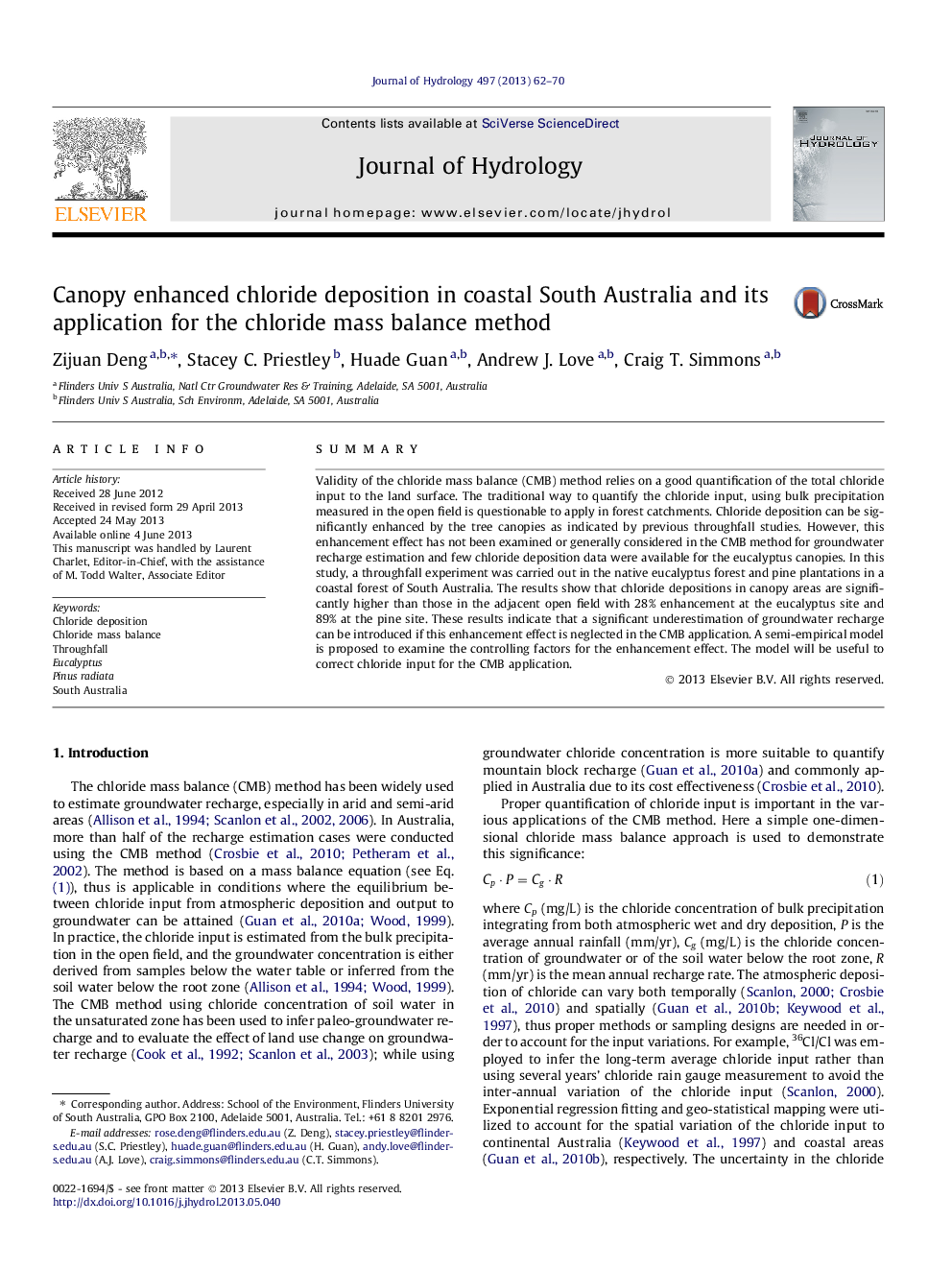| Article ID | Journal | Published Year | Pages | File Type |
|---|---|---|---|---|
| 4576236 | Journal of Hydrology | 2013 | 9 Pages |
•We raise an issue that has not been considered in chloride mass balance method.•Chloride depositions in throughfall were collected in eucalyptus and pine plantations.•Chloride depositions were modelled both mechanically and empirically.•The modelling can quantify the contribution of wind speed, rainfall, etc.•The model can explain both temporal and spatial variation of throughfall deposition.
SummaryValidity of the chloride mass balance (CMB) method relies on a good quantification of the total chloride input to the land surface. The traditional way to quantify the chloride input, using bulk precipitation measured in the open field is questionable to apply in forest catchments. Chloride deposition can be significantly enhanced by the tree canopies as indicated by previous throughfall studies. However, this enhancement effect has not been examined or generally considered in the CMB method for groundwater recharge estimation and few chloride deposition data were available for the eucalyptus canopies. In this study, a throughfall experiment was carried out in the native eucalyptus forest and pine plantations in a coastal forest of South Australia. The results show that chloride depositions in canopy areas are significantly higher than those in the adjacent open field with 28% enhancement at the eucalyptus site and 89% at the pine site. These results indicate that a significant underestimation of groundwater recharge can be introduced if this enhancement effect is neglected in the CMB application. A semi-empirical model is proposed to examine the controlling factors for the enhancement effect. The model will be useful to correct chloride input for the CMB application.
